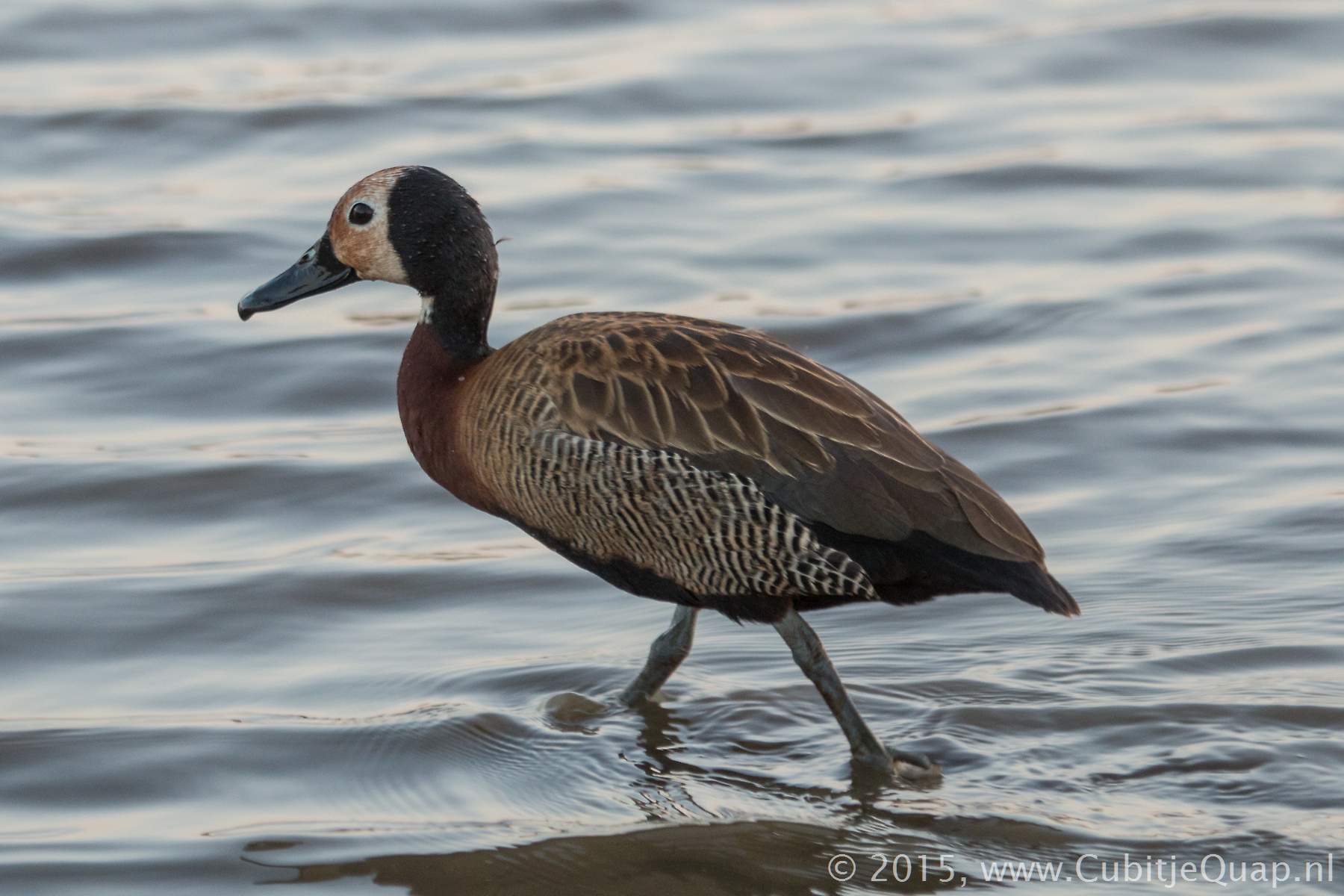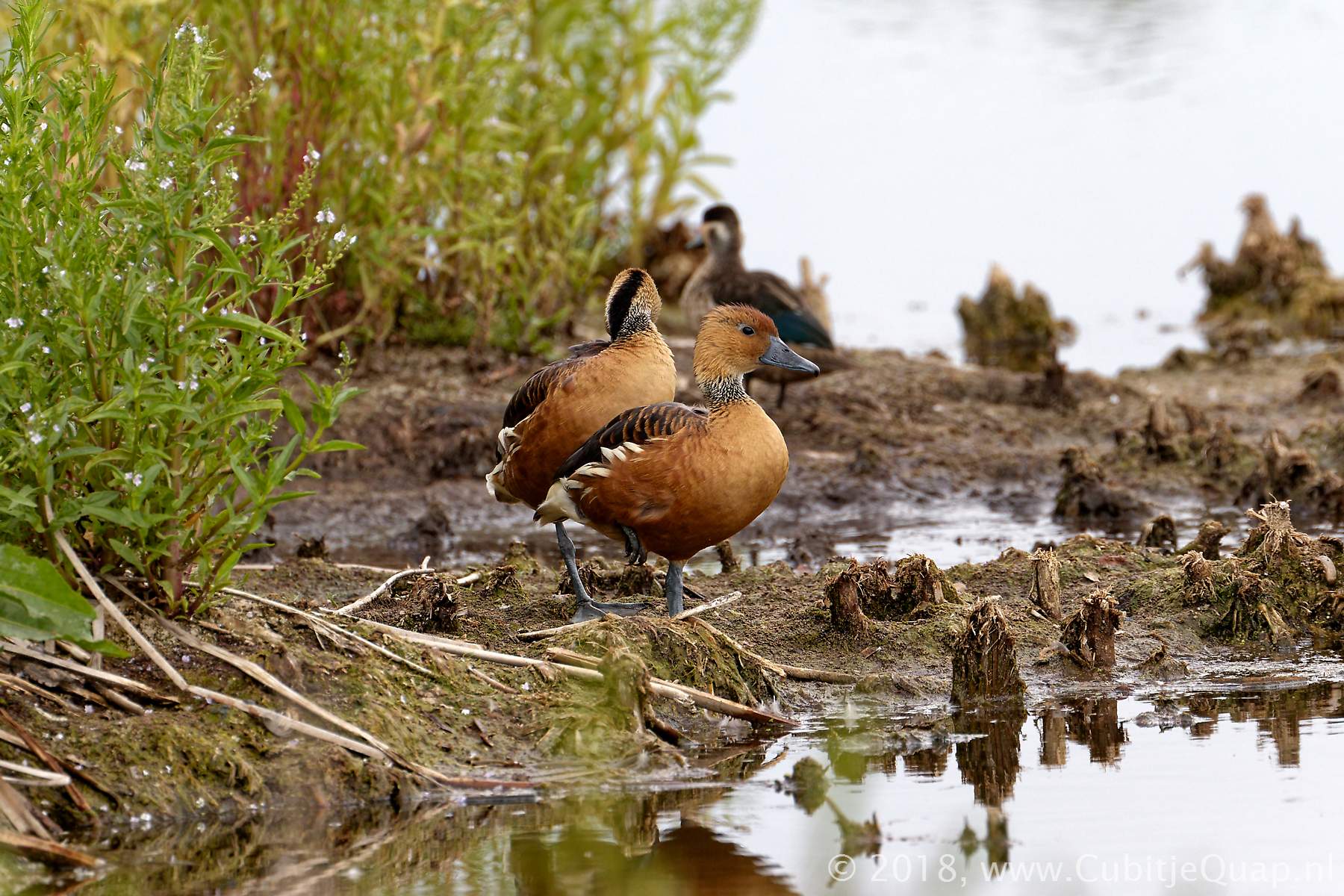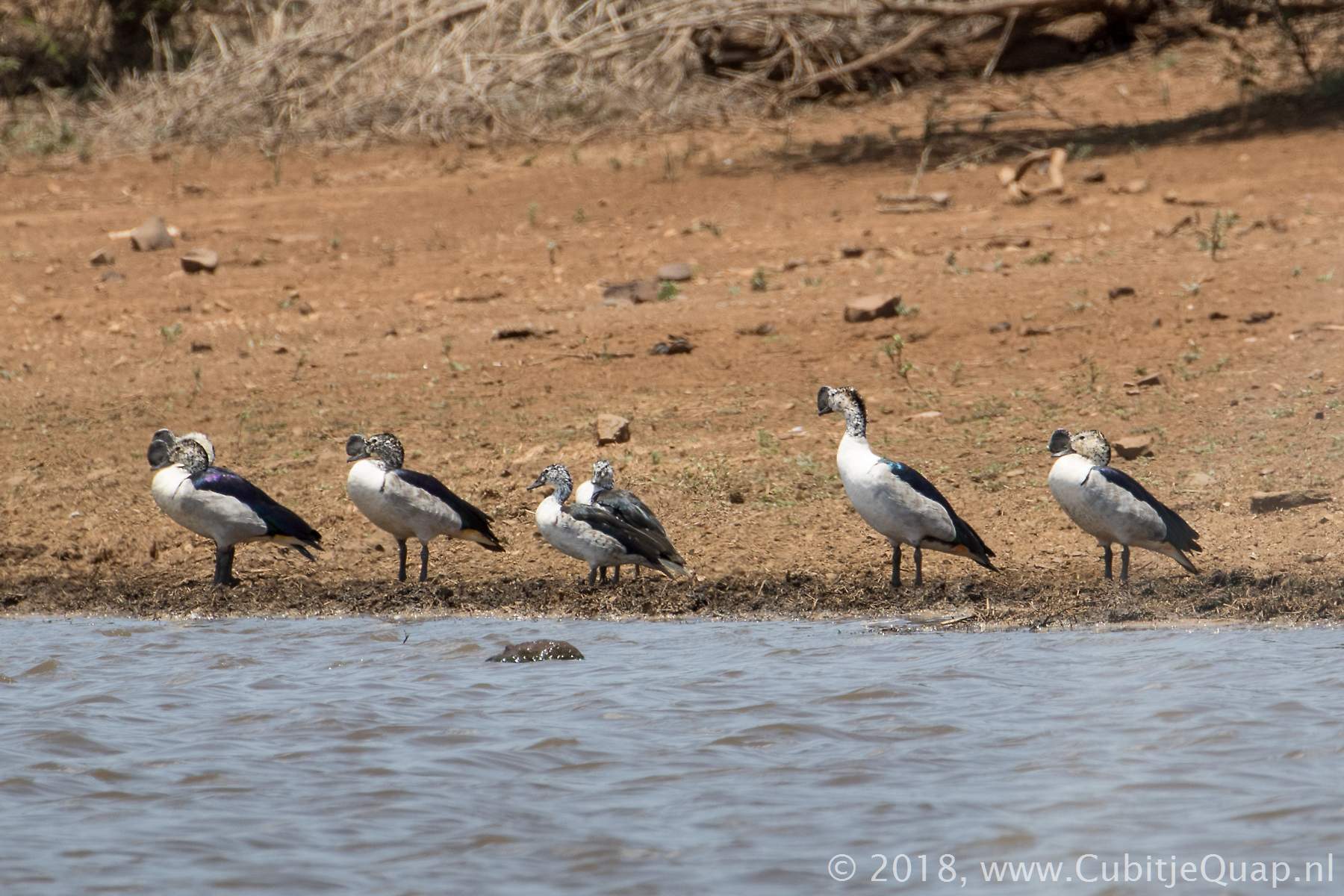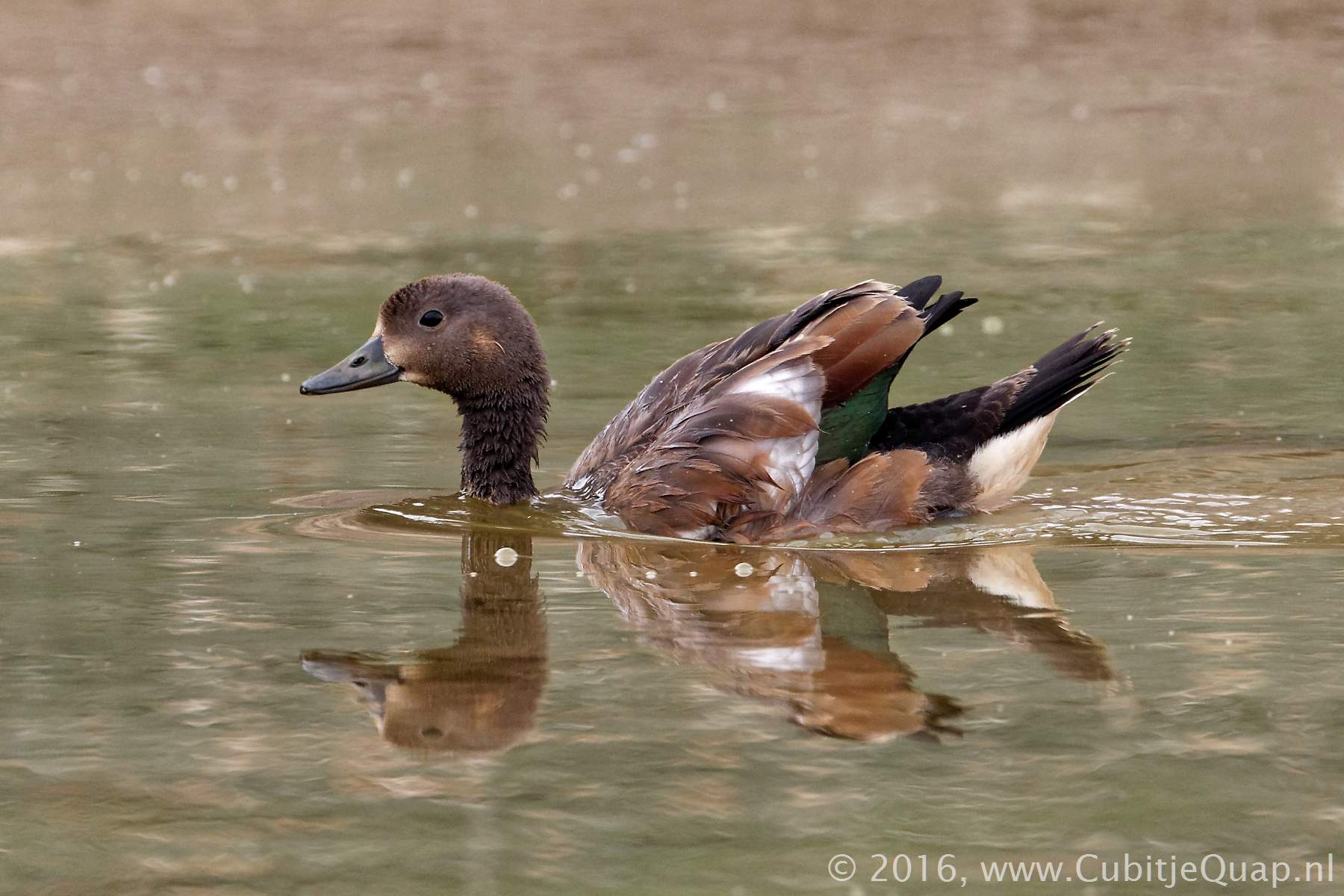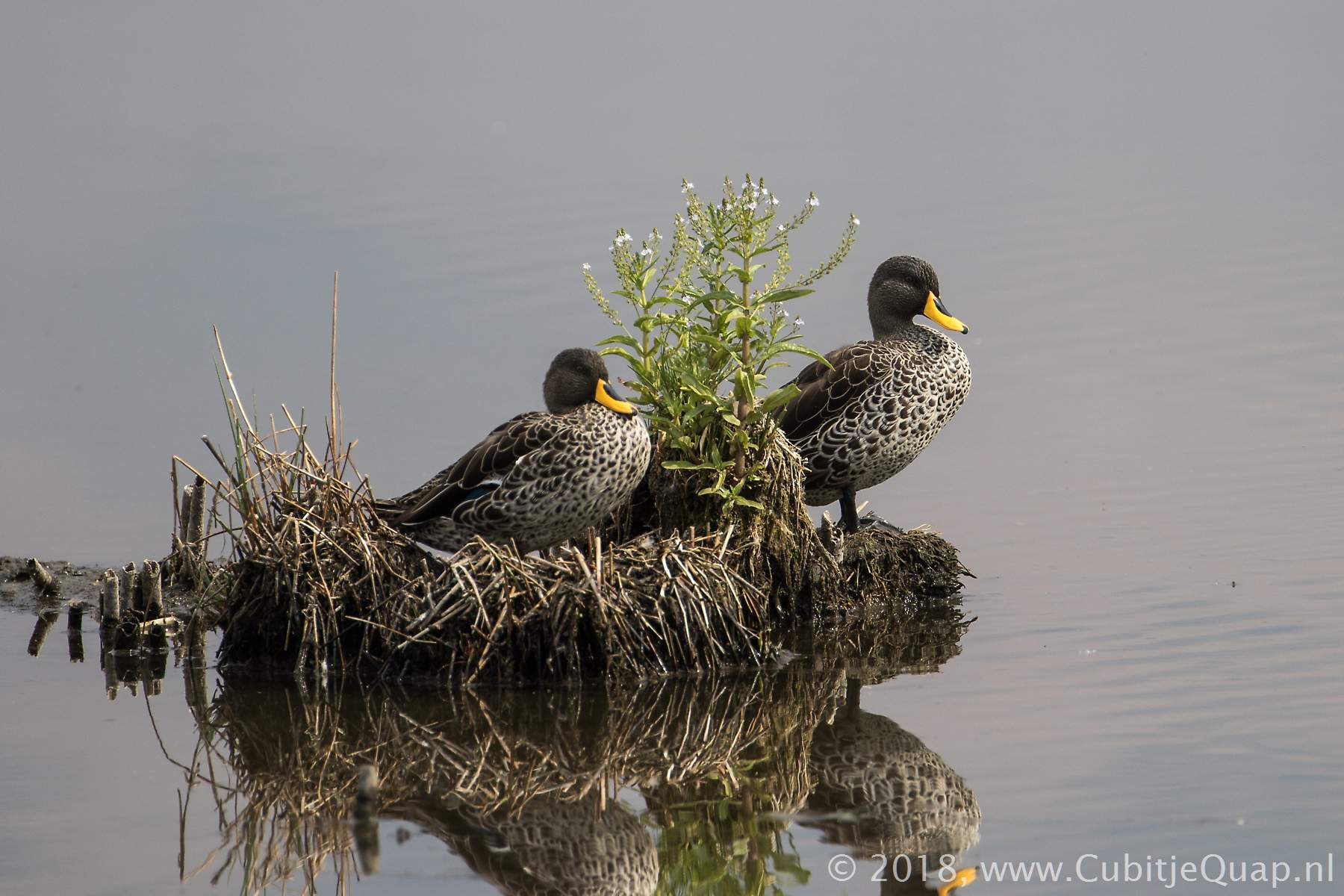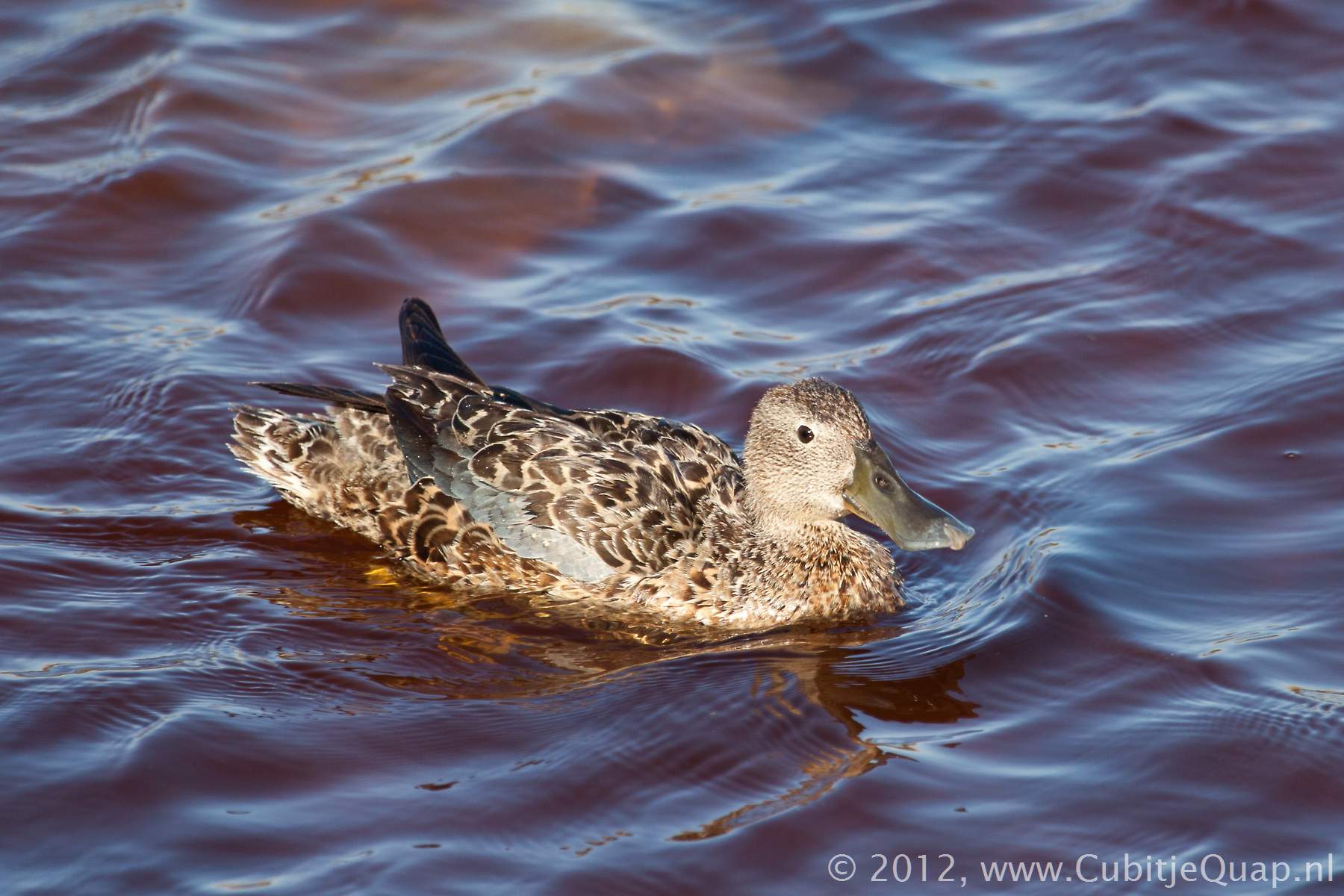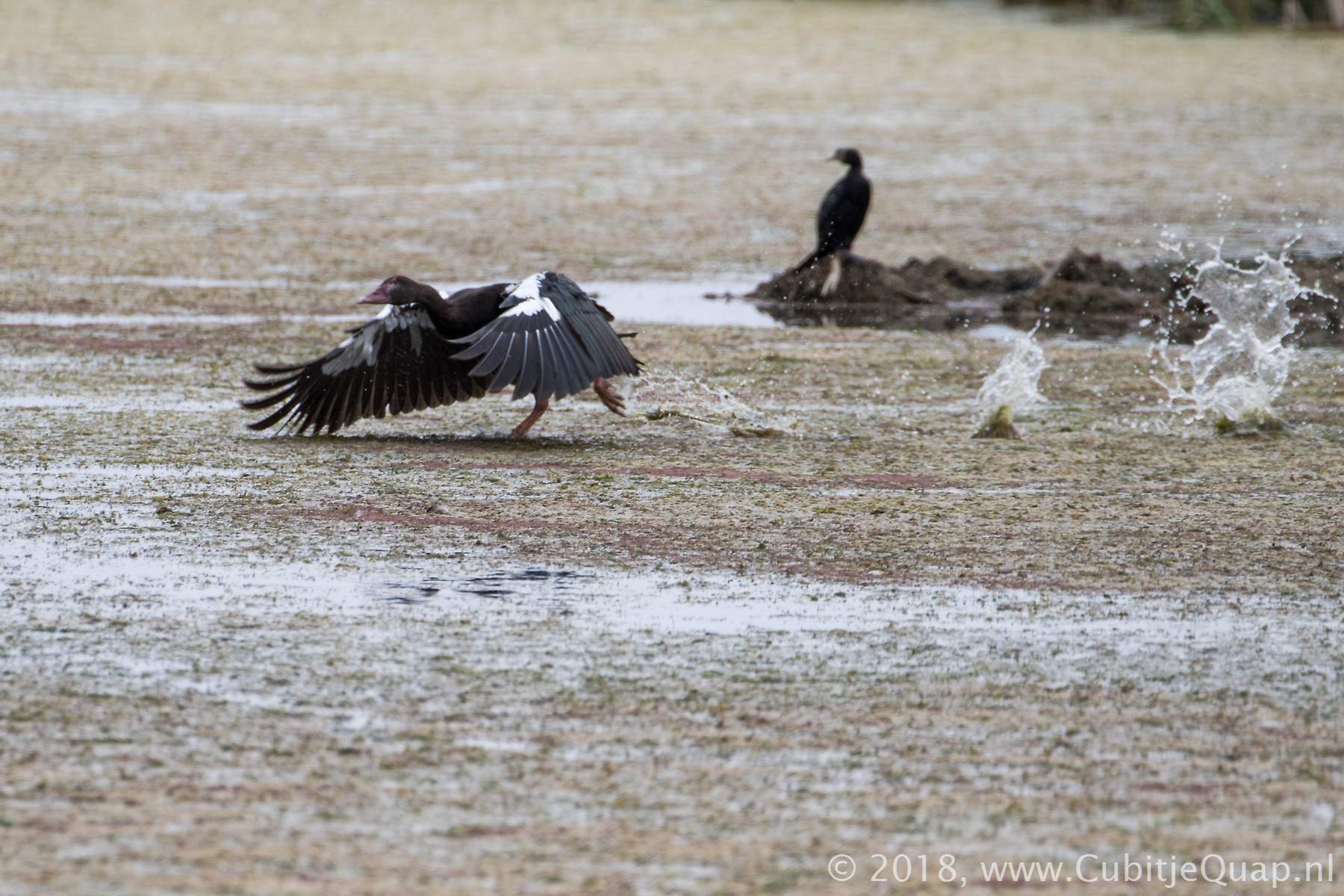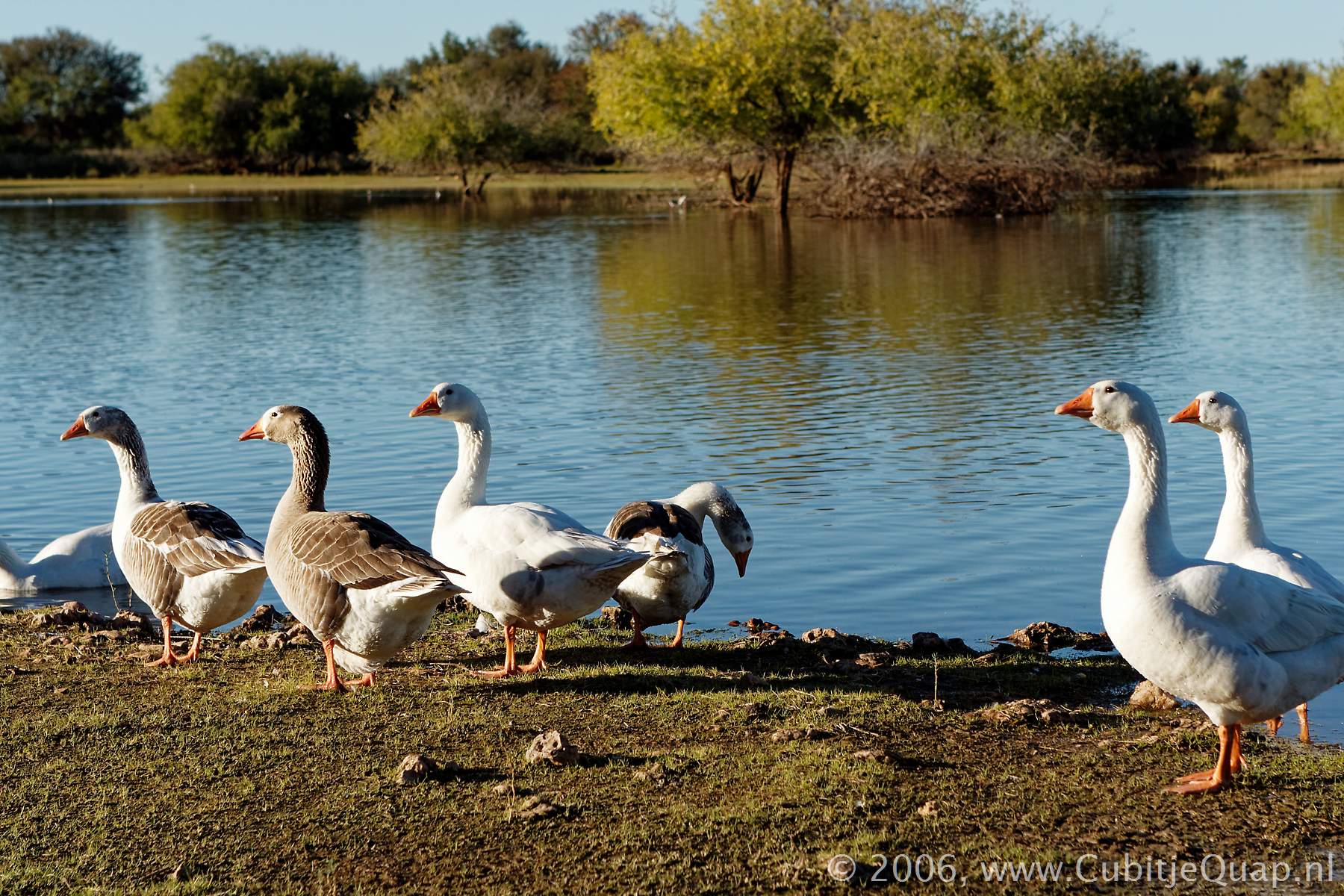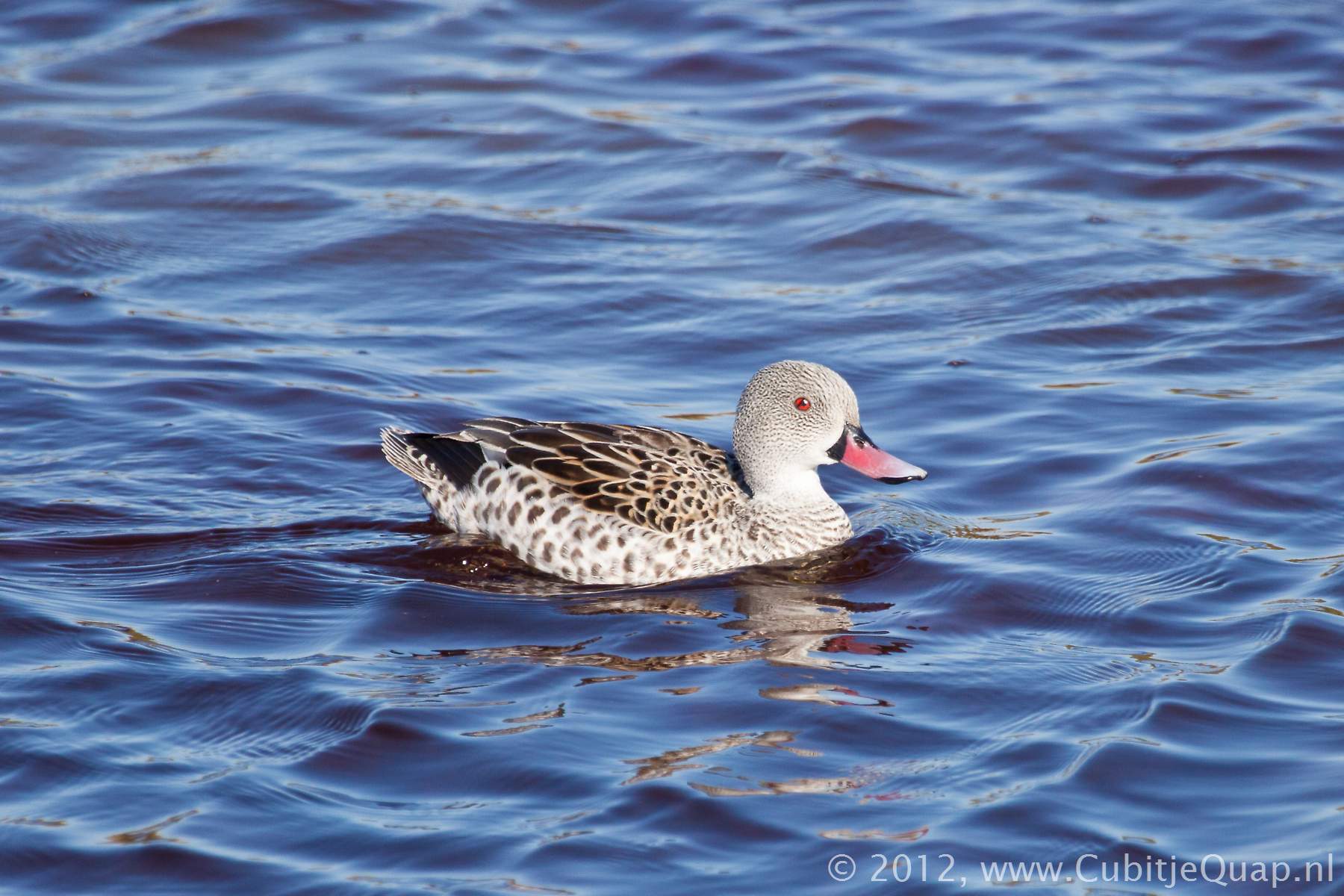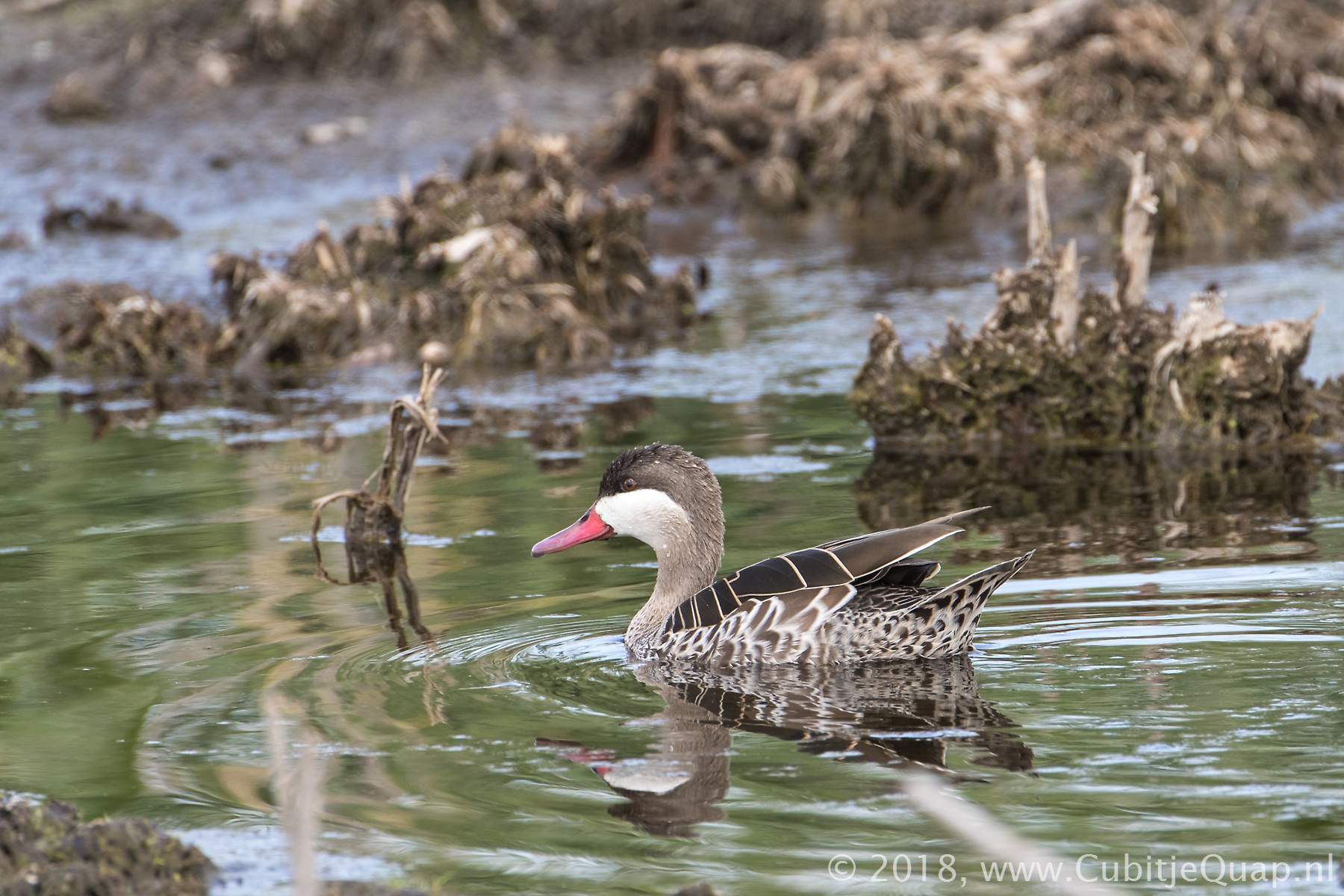Ducks and geese Information page
Description
Familiar small-to large-bodied waterbirds.They have a simultaneous moult of the flight feathers and are flightless for up to six weeks when not breeding. In all ducks and geeses the male has a penis that is eversible and is usually hidden. Copulation occurs on the water, forced coppulations being common.
Ducks and geese can be devided into four subgroups.
Scientific names
Anas = duck (latin)Alopochen = fox goose (probably in relation to rufous markings)
Dendrocygna = tree swan (significans unclear as rarely perch in trees)
Plectropterus = spur wing (in reference to prominent carpal spurs)
Sarkidiomis = flesh bird (in reference to fleshy knob)
Tadorna = shelduck (from the french tadorna)
Whistling ducks
These ducks have a modified syrinx allowing whistling, and they generally have the legs set far back on the body -as an adaptation to diving - resulting in a more upright stance and less waddling walks than other ducks.Their fight is fast and direct with rapid wing-beats and they do not tend to fly in formation.
They are largely nomadic and move in response to conditions and to large water-bodies. They are most gregarious and during the day will often loaf in groups on the shoreline
Mainly vegetarian, they can feed on the water surface by dabbling, but they can also dive to obtain food from bottom mud sediments, some may feed on land as well.
They are monogamous with long-term pair-bonds. The males assist with all spects of breeding. They have a scrape nest on the ground, inter and intra-specific eggdumping is common. During incubation the male mostly sits at night and the female during the day. When leaving the nest, the adults will pull surrounding vegetation down over the nest for concealment. Usually incubation starts at clutch completion, leading to synchronous hatching. The chicks will follow the adults to the water as soon as the last chick has hatched.
True ducks
Ducks with short legs and squat bodies. The front toes are webbed and the hind toe is reduced. They have fairly narrow, pointed wings. Many species have an iridicent 'window', valled a speculum on the secondaries. They use feet as brakes when landing on water.The plumage is waterproof. After breeding they undergo a flightless moult of a few weeks. They are not stricktly monogamous. The nests are usually lined with down and egg-dumping is common. Incubation is generally done by the female, she usually covers the eggs when she leaves the nest. Hatching is synchronous.
Geese
Geese differ from ducks by having well developed hind toes and claws on all toes allowing perching. They aso tend to nest in tree-holes, but will also nest on the ground (as do ducks)All species are nomadic, they are gregarious when they undergo a flightless moult (when not breeding). They generally return to the same roost every night.
They are monogmous and territorial, with the pair-bond usually not lasting past incubation. They copulate on water and incubation tends to start at clutch completion, resulting in synchronous hatching. The eggshells are not removed from the nest.
Teals
Typical small ducks. All three species are either resident, nomadic or partial migrants. They choose a temporary location for breeding and they move to permanent water for the puprose of moulting, they need safety from terrestrial enemies because they have a flightless moult. They will dive to escape danger during this time and then will move to deep water.They have three webbed front toes. The waterproof plumage has dense down. The sexes are slightly differen in colouration. Males have a wing speculum (panel on the secondaries that is of a different colour to the rest of the wing).
Teals are mostly gregarious when not breeding and they may engage in communal bathing. They primarily forage during the day, but they may be active at moonlit nights. The flattened bill with its hooked tip is used for dabbling and filter feeding while swimming. They can up-end and dive in deep water, and on land they will graze fresh grasses.
They are monogmous with the pair-bond usually not lasting past incubation. Teals are usually solitary nesters, but nests are sometimes fairly close to each other. The nests are well-hidden and camouflaged in vegetation on the ground - usually not too far from water. When leaving the nest, the female covers the eggs with down. They will defend the nest with a bronken-wing distraction display in case of danger. Hatching is synchronised and eggshells are usually removed from the nest by the female. Chicks are led to water after hatching.
Interesting links
Wikipediafatbirder.com

